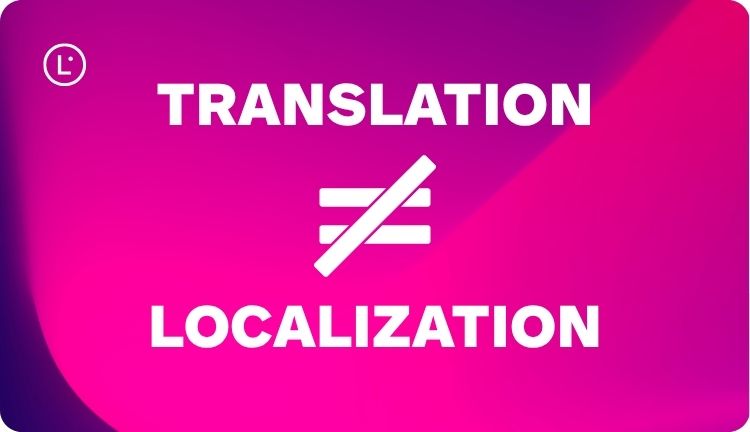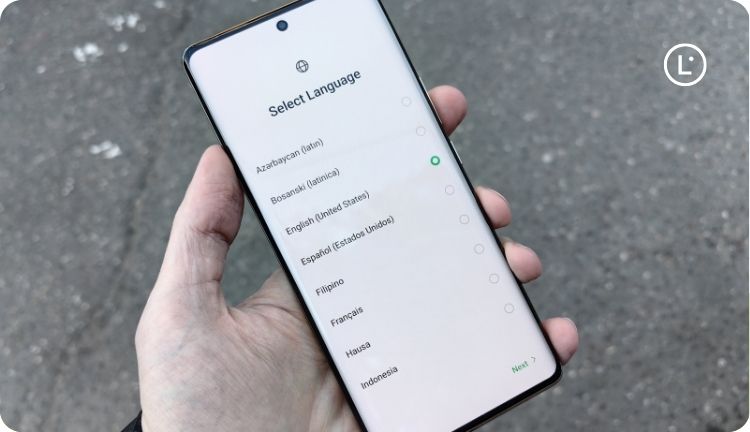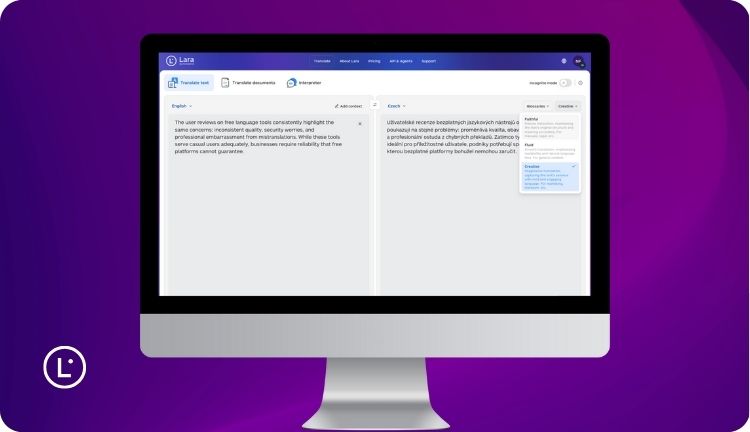It’s easy to focus on product features or flashy marketing when trying to grow internationally but one key ingredient is often missed: localization.
Connecting with customers in new markets isn’t just about translating a slogan. It’s about understanding how people think, speak, and buy in their cultural context.

The truth is, customers are far more likely to engage and convert when your message feels familiar and relevant to them. That’s why companies investing in real business localization strategies (not just word-for-word translation) are seeing better engagement, higher conversions, and stronger revenue growth around the world.
Why localization drives revenue growth
The connection between how business localization impacts revenue is backed by compelling data. This stark preference for localized content directly translates to lost sales opportunities for businesses that fail to adapt their messaging.
Sales growth through language adaptation occurs because localization removes fundamental barriers between businesses and their potential customers. When customers can understand product information, navigate websites, and receive support in their preferred language, the friction in the buying process decreases dramatically. Shopify data demonstrates this impact clearly, showing that translation increases retailers’ conversion rates by an average of 13%.
The psychological aspect of localization cannot be understated. As Nelson Mandela famously said, “If you talk to a man in a language he understands, that goes to his head. If you talk to him in his language, that goes to his heart.” This emotional connection fostered by localized marketing creates deeper brand loyalty and reduces customer churn rates significantly.
Strategic approaches to business localization
Effective business localization strategies require a comprehensive approach that goes beyond simple language translation. Successful companies understand that localization encompasses cultural adaptation, regional preferences, and market-specific positioning that resonates with local audiences.

The foundation of any successful localization strategy begins with thorough market research. Understanding your target audience’s cultural nuances, purchasing behaviors, and communication preferences allows you to tailor your approach effectively. This research phase should examine local competitors, regulatory requirements, and economic conditions that might influence customer decision-making.
Localizing content to increase sales involves adapting various elements of your business presence. Product descriptions need to highlight features that matter most to local customers, while marketing messages should incorporate culturally relevant references and communication styles. Visual elements, including images and color schemes, may also require adjustment to align with local preferences and avoid cultural missteps.
For optimal results, businesses should prioritize which content elements have the greatest impact on sales conversion. Website landing pages, product information, customer testimonials, and checkout processes typically offer the highest return on localization investment. These customer-facing touchpoints directly influence purchasing decisions and should receive priority attention in any localization initiative.
Understanding localization’s impact on revenue streams
How localization impacts revenue extends beyond immediate sales increases to encompass multiple revenue-generating mechanisms. Customer acquisition costs typically decrease in localized markets because targeted messaging resonates more effectively with local audiences, improving advertising efficiency and reducing the cost per conversion.
Customer lifetime value also increases significantly through localization efforts. When customers receive support, product information, and ongoing communication in their preferred language, satisfaction scores improve and repeat purchase rates increase. Studies suggest that just a 5% increase in customer retention can boost company revenue by 25-95%, highlighting the compound effect of localization on long-term profitability.
Multilingual sales funnel optimization represents another revenue opportunity often overlooked by businesses. Each stage of the customer journey—from initial awareness through post-purchase support—benefits from localization. Localized email marketing campaigns, social media content, and customer support interactions all contribute to improved conversion rates and reduced churn.

Market expansion becomes more feasible and profitable when businesses invest in proper localization infrastructure. Companies can enter new geographical markets more confidently when they have systems in place to deliver localized experiences consistently. This scalability advantage allows businesses to capture market share more rapidly than competitors relying on generic, one-size-fits-all approaches.
Examples of business localization success
Examples of business localization success provide compelling evidence of localization’s revenue impact across various industries. Nivea, the international skincare brand, demonstrates excellent localization execution by adapting its product promotions and visual imagery for each market. The company uses different models in advertising campaigns to reflect local demographics and adjusts product positioning based on regional beauty standards and preferences.
McDonald’s represents another classic example of successful business localization strategies. The fast-food giant adapts its menu offerings significantly across different markets—offering rice-based burgers in India, café con leche in Miami’s Cuban community, and region-specific flavors that cater to local palates. This approach helps the international brand feel authentically local while maintaining its core brand identity.

In the e-commerce space, Deliveroo’s international expansion strategy showcases modern localization best practices. Using sophisticated translation management systems, the company reduced project timelines by three to four days while achieving 40% time savings for localization managers, developers, and designers. Most importantly, their localized approach helped them achieve market leadership rankings of 1st or 2nd position in most markets where they operate.
Facebook advertising data provides quantifiable evidence of localization’s impact on marketing effectiveness. Ads with localized marketing copy outperformed standard ads by 22% for women and 87% for men, demonstrating significant improvements in audience engagement and reduced customer acquisition costs.
Calculating localization ROI for businesses
Understanding localization ROI for businesses requires examining both direct and indirect revenue impacts. Direct benefits include increased conversion rates, higher average order values, and expanded market reach. Indirect benefits encompass improved brand perception, reduced customer support costs, and enhanced customer loyalty that drives long-term revenue growth.
The financial investment in localization typically pays for itself relatively quickly in high-potential markets. Translation and adaptation costs represent a fraction of the revenue increase generated by improved conversion rates and localization. Many businesses report ROI improvements of 300-400% within the first year of implementing comprehensive localization strategies.
Cost considerations include initial translation and adaptation expenses, ongoing content maintenance, and technology investments in translation management systems. However, these costs decrease over time as business translation ROI improves through economies of scale and reusable translation assets like glossaries and translation memories.
Measuring localization success requires tracking relevant metrics including market-specific conversion rates, revenue per visitor, customer acquisition costs, and customer satisfaction scores. Advanced analytics help businesses identify which localization elements drive the greatest revenue impact, enabling them to optimize their strategies continuously.
Leveraging technology for scalable localization
Modern AI-powered translation technologies have transformed how businesses approach language adaptation for sales teams. While human expertise remains essential for cultural nuance and creative content adaptation, AI translation tools can significantly accelerate the localization process and reduce costs for high-volume content.
Lara Translate represents a new generation of specialized translation technology designed specifically for business localization needs. Unlike general-purpose translation tools, Lara Translate offers contextual accuracy optimized for professional content.
The platform’s speed advantage—completing 99% of translations in 1.2 seconds—enables businesses to implement targeted regional campaigns more rapidly and cost-effectively than traditional translation methods.
For companies managing multilingual sales funnel optimization across multiple markets, Lara Translate’s consistency and speed advantages help maintain brand messaging while adapting content for local markets efficiently.
Professional translators and localization specialists continue to play crucial roles in ensuring cultural appropriateness and maintaining brand voice across different markets. The most effective localization strategies combine AI-powered efficiency with human expertise to deliver both speed and quality in content adaptation.
FAQs
How quickly can businesses see results from localization efforts?
Most businesses begin seeing improved conversion rates and localization benefits within 30-60 days of implementing localized content. However, significant revenue growth typically becomes apparent within 3-6 months as customers become more familiar with the localized brand experience.
What content should businesses prioritize for localization?
Priority should be given to customer-facing content that directly influences purchasing decisions: product descriptions, landing pages, checkout processes, and customer support materials. These elements have the most immediate impact on sales growth through language adaptation.
How do businesses measure localization ROI effectively?
Track market-specific metrics including conversion rates, revenue per visitor, customer acquisition costs, and customer lifetime value. Compare these metrics before and after localization implementation to calculate localization ROI for businesses accurately.
Can small businesses afford comprehensive localization strategies?
Modern translation technologies have made localizing content to increase sales more accessible for smaller businesses. Starting with high-impact content and priority markets allows companies to scale their localization efforts gradually based on proven results.
This article is about
- How business localization strategies increase revenue and improve sales performance
- The connection between localized marketing and higher conversion rates
- Real-world examples of successful localization from global brands
- Methods to calculate and improve localization ROI
- The role of AI and best practices in scalable, multilingual sales strategies
Useful article
- How to optimize content for better machine translation
- How AI Translation Can Help Businesses Expand into International Markets
- How to sell products globally






